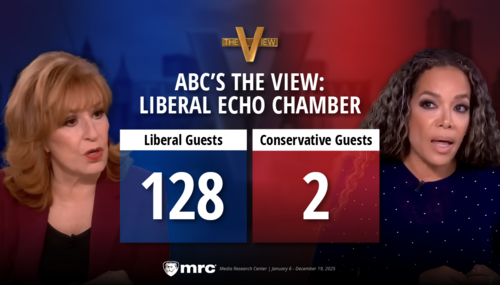 As liberal Justice Elena Kagan takes her place on the Supreme Court next week, she could thank The New York Times for making her confirmation process smoother. Ever since Ronald Reagan nominated Robert Bork and he was rejected by the Senate in 1987 for his views and not his character or qualifications, confirmation battles for liberals have become less like judicial seminars and more like political campaigns.
As liberal Justice Elena Kagan takes her place on the Supreme Court next week, she could thank The New York Times for making her confirmation process smoother. Ever since Ronald Reagan nominated Robert Bork and he was rejected by the Senate in 1987 for his views and not his character or qualifications, confirmation battles for liberals have become less like judicial seminars and more like political campaigns. For almost 20 years, in this new era of activist groups and activist reporters, The New York Times has covered Supreme Court fights with a heavy finger on the scales of justice, tipping the balance. They have painted conservatives as highly controversial and dangerously ideological, while liberal nominees were presented as "brilliant" moderates who were only newsworthy in that they were often laudably "historic" choices, or, in Kagan's case, she was not only "brilliant," but "very funny, warm and witty."
For Supremely Slanted, Times Watch analyzed the arc of coverage over the last two decades and the last seven Supreme Court justices, from Clarence Thomas's nomination in 1991 to Elena Kagan's confirmation in 2010, and found stark differences in how the Times reported on the four Justices nominated by Democrats versus the three nominated by Republicans.
Times Watch examined every substantive New York Times news story on each nomination, starting with the official presidential announcement and ending with the Senate vote confirming the nominee to the Supreme Court. Among the findings:
A stark pro-Democratic double standard in labeling:
- The Times demonstrated a 10-1 disparity in labeling "conservative" justices nominated by Republicans compared to "liberal" ones nominated by Democrats.
- In all, the three Republican-nominated justices were labeled "conservative" 105 times, while the four justices nominated by Democrats were labeled liberal on just 14 occasions.
- Two dueling headlines demonstrate the Times' slanted reporting in a nutshell. On June 27, 1993, The New York Times greeted Democrat Bill Clinton's nominee, the liberal Ruth Bader Ginsburg, former chief litigator of the ACLU's women's rights project and a strong defender of unrestricted abortion rights, as a moderate: "Balanced Jurist at Home in the Middle." On July 28, 2005, the Times welcomed Republican George W. Bush's nomination of John Roberts, a former associate counsel to President Ronald Reagan, by summing up his judicial philosophy: "An Advocate for the Right."
A vast difference in intensity of coverage:
Besides the slant in labeling, there was a vast difference in the volume and intensity of coverage of conservative nominees compared to those on the left. While conservative nominations are cast as feverish battles over ideology and the future trend of the court, the Times withholds the drama and controversy when it comes to Democrats. The paper has done its best to drain the drama from Democratic nomination fights, pushing them as foregone conclusions.
- Republican nominees received intense coverage. Clarence Thomas was the subject of 81 stories through his initial hearings -- not including the massive coverage after law professor Anita Hill made her unsubstantiated sexual harassment allegations. John Roberts was the subject of 107 stories, Samuel Alito 92.
- Democratic nominees received far less coverage. Ruth Bader Ginsburg's nomination was featured in a flimsy 22 Times stories, while Clinton's other pick Stephen Breyer was dealt with in a mere 20 stories. Obama nominee Sonia Sotomayor was a partial exception to the rule with 85 stories, but many of those keyed on the fact Sotomayor was a hometown pick. Elena Kagan also failed to excite interest, featuring in only 43 stories.
- Even taking into account that fewer stories for Democratic nominees should on average result in fewer ideological labels, the disparity was still sharp. While Democratic nominees were labeled liberal an average of once every 12 stories, Republican nominees were tagged conservative once every 2.66 stories. For instance, while Clarence Thomas was tagged conservative at an average rate of roughly once in every two stories (44 labels out of 81 stories), Sonia Sotomayor received a liberal label just once in every 17 stories (5 labels out of 85 stories).
You can begin reading the full report here, or read a formatted PDF version here.




